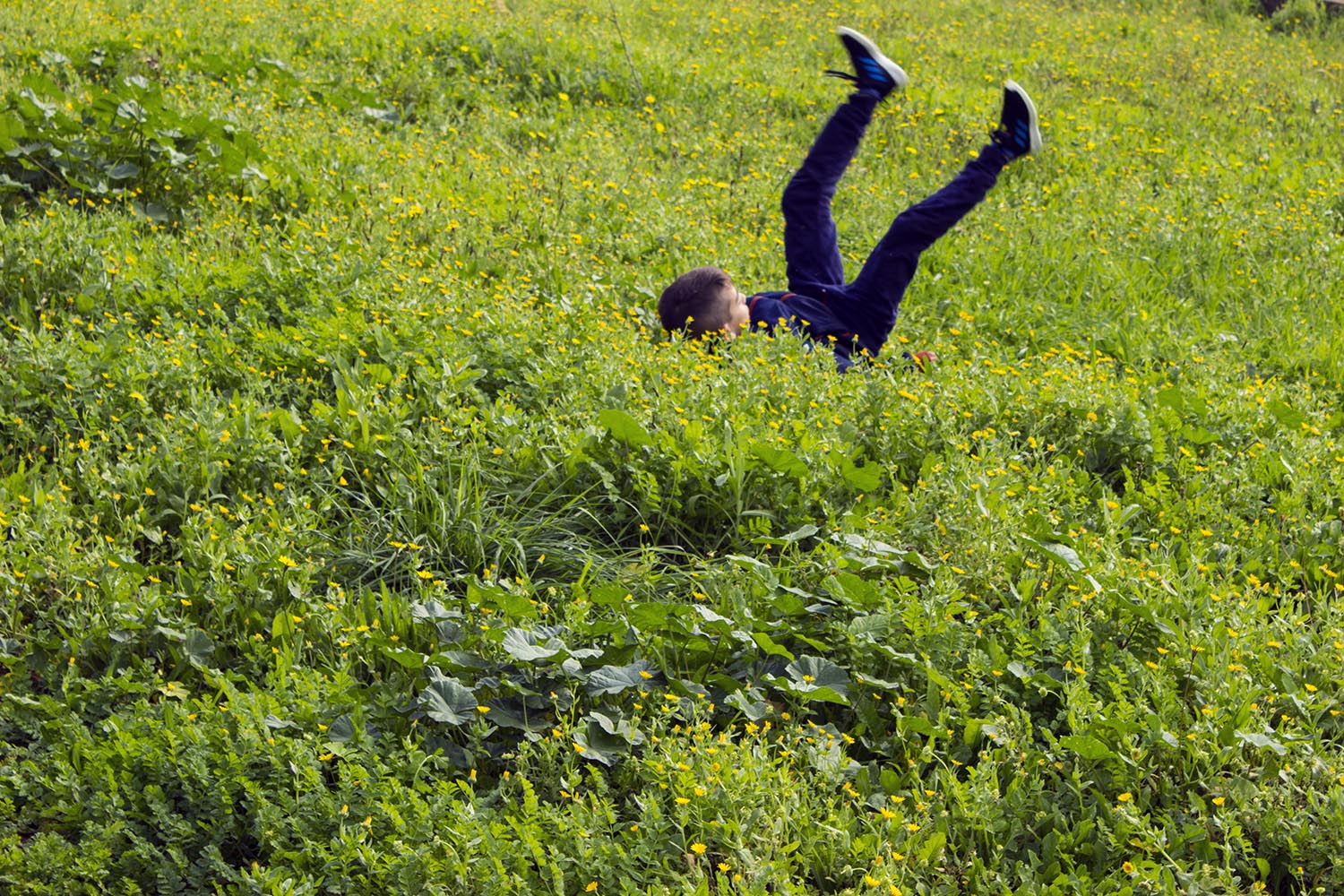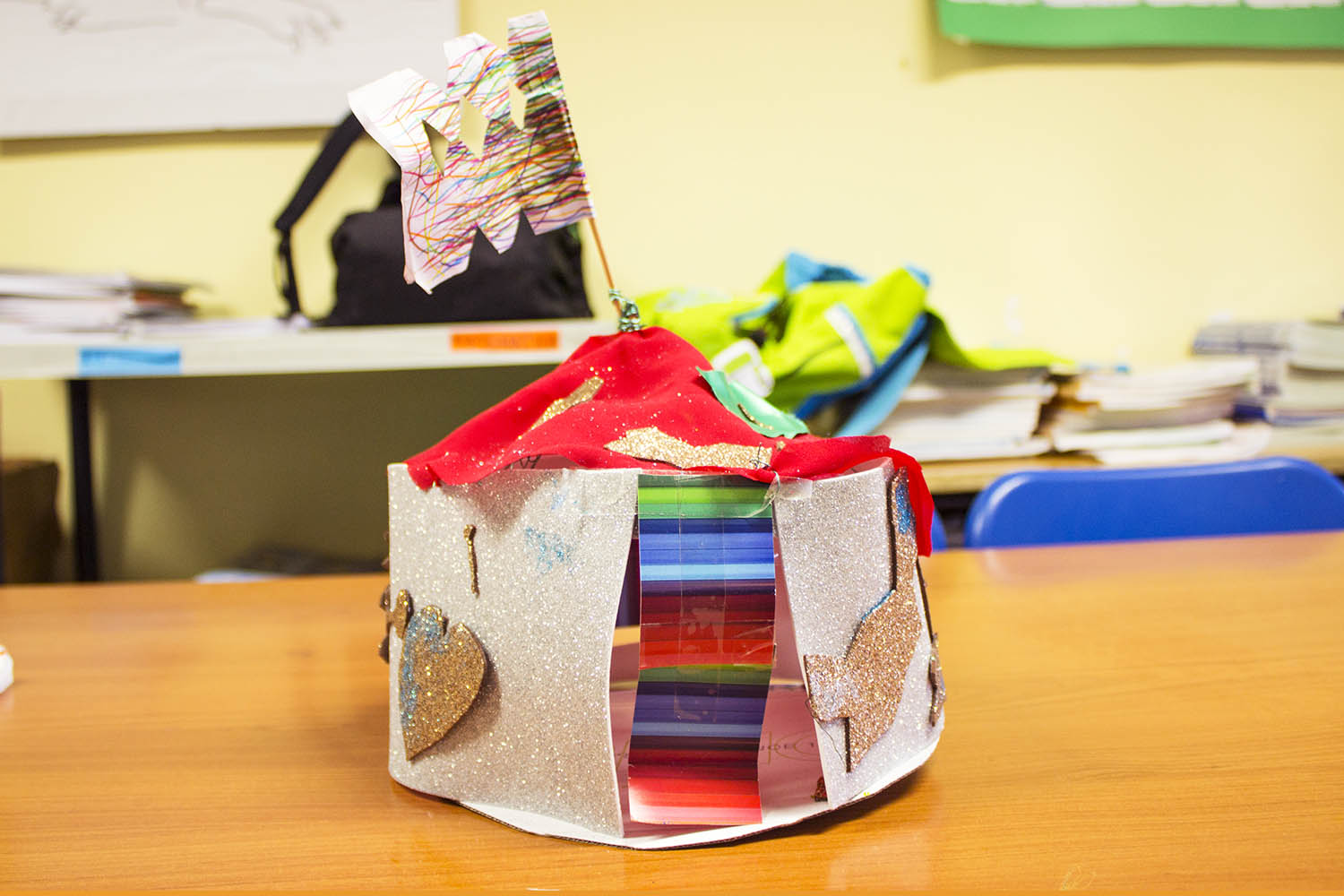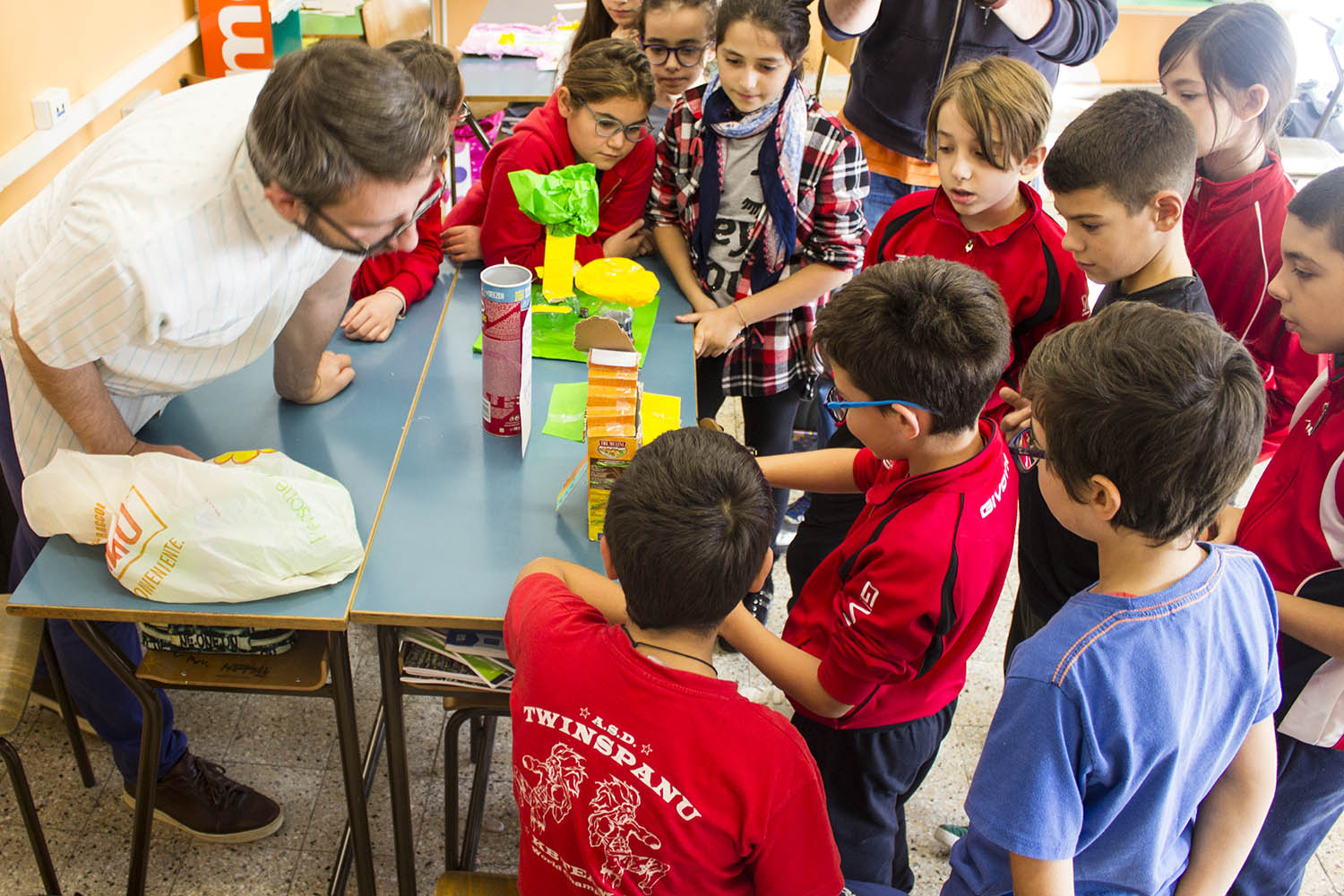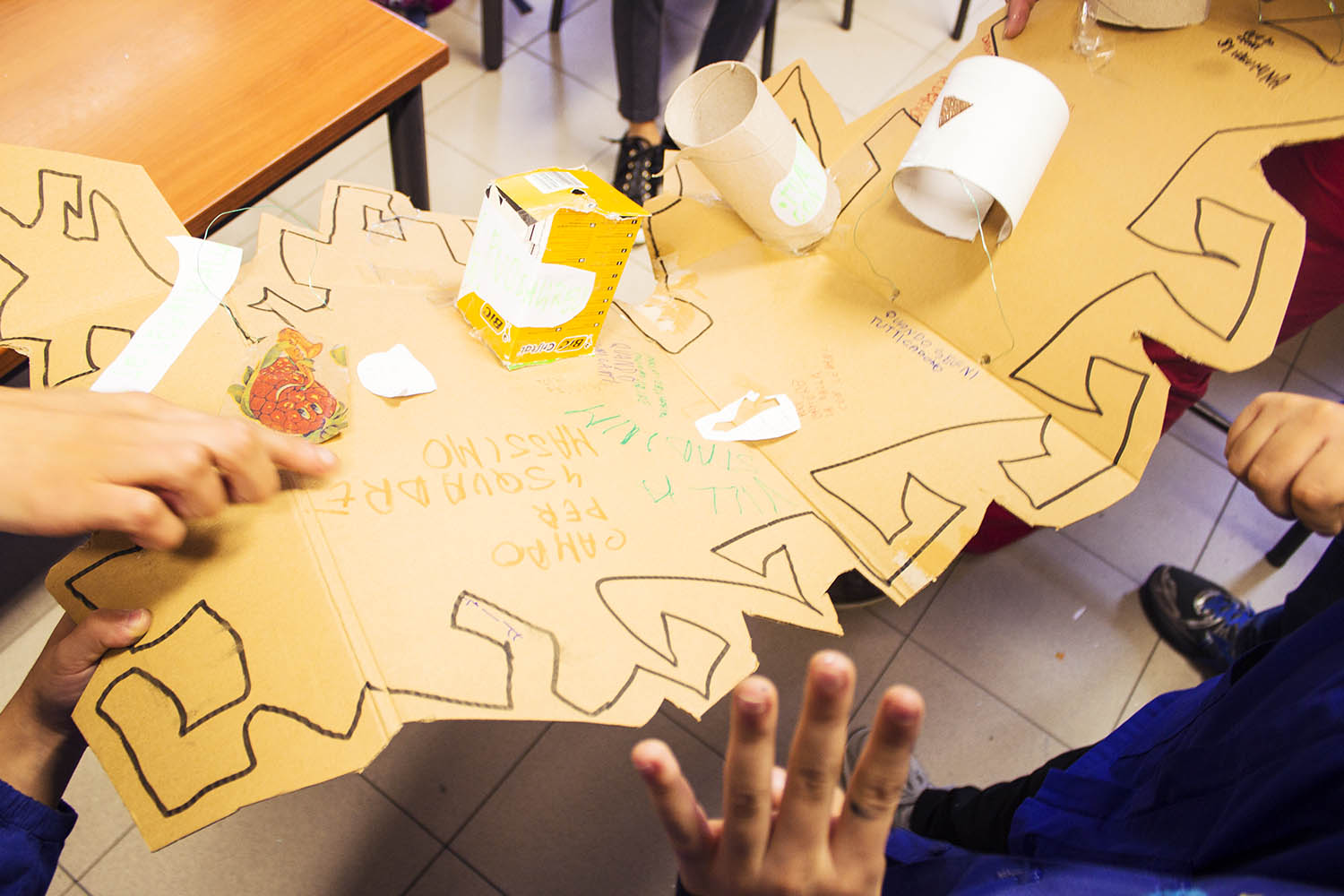Dragos Olea of Apparatus 22 arrived in Sulcis on November 11th; it was his first time in Sardinia and his first collaboration with Cherimus. He spent two weeks with us, leading eight workshops in Villamassargia, Domusnovas, Musei, and Iglesias and presenting his work to the public at Villamassargia: two intense weeks to officially launch the project “The Possible Gardens.”
The first week was dedicated to getting to know the children and the parks, to understanding the wishes and the dreams of the kids through their words and their drawings. Dragos also shared the work of Apparatus 22, focusing on public projects carried out across Europe.
The first meeting with each class consisted of a visit to the garden made available for the project. In Villamassargia, it’s a former cemetery; decommissioned for years, it still retains traces of the avenue that cut it in two, lined by cypress and palms. The children have reconquered the space and have imagined castles and flags, crazily-outlined playing fields, houses of flowers, burrows where one can look for shamrocks and collect lucky symbols. Dragos is very curious and asks many questions to the children, visiting them in their favorite little corner, where they’re already very much at home.

The garden of Domusnovas has at its center a large tree with open arms, a carob tree within which the children gathered as in a magic flask. Someone has imagined the carob tree at the center of an intricate labyrinth, a place in which to play and get lost and find each other again. On the tree in the center there is also a house in which musical instruments are collected. In Musei, the smallest village, the class is made up of ten students, in reality two classes in one: one fourth and one fifth grade class. The village was rapidly depopulated, the teacher tells us, after the closure of the Portovesme industrial plant. The garden is a narrow tongue of green between two streets; it is difficult to imagine a park in it. But the children composed it naturally, extending the limits of that little handkerchief of a park, envisioning in it an open-air dance school; a rich orchard to take care of and from which to collect fresh fruit; a track that goes up and down where one can ride horses and motorcycles; a bush where one can bring their own favorite animals, hens, dogs and cats; and finally, a thread suspended between the trees for attaching drawings for an annual festival. Dragos wrote all this in his notebook, thought to himself and smiled.
Working in Iglesias immediately after Musei is strange: we felt as though we were passing from a remote rural village to the core of a gigantic metropolis. Its park is the largest of the four and has two floors: a high hill, dense with trees, from which a little triangle of sea and the mining town and hills of Monteponi can be seen between the houses. Rolling down the steep descent to the foot of the hill, one finds oneself on a flat meadow where it is lovely to run free. In fact, the children did run, up and down, and one even rolled down the hill and thought that such a thing must absolutely be included in the park, that the grassy slopes must be preserved.

In the woods, someone imagined a magical dwelling for inventing spells, another a planetarium where the motion of the stars is determined from the flight of owls, and yet another proposed monuments dedicated to Hypatia and Frida Kahlo. Dragos followed the children and tried to imagine what lay beyond the houses, beyond the hills, out there where a child would want to be able to see from the top of a tree.
The following week, at school, everything became solid and spectacular. The children collected paper, fabrics, and all kinds of gaudy materials to shape their ideas and make models of them. Many things have changed since the first meeting: the children have worked in groups to combine the ideas and forces that provoked by Dragos’s presence. On Dragos’s part, he has studied their ideas and proposed many possible ways of developing them. In Villamassargia, the den has become a mini pinnetta, a typical Sardinian stone building. The playing field now has a jagged perimeter that recalls the old maps of Sardinia, and here and there doors and passages arise from the grass, every element linked by rules of the game yet to be written. In Domusnovas, labyrinths in the form of mice are imagined, as well as astronomical observatories and theatrical stages, all around the carob tree. In Musei, barres for dancing, axes of balance, a track for horses and motorcycles, and a thread to attach drawings became a single line going up and down across the orchards and grass. In Iglesias, the animals multiply: octopuses, owls, turtles, dragons, and panda-corns. The observation point becomes an elastic rainbow carpet, even equipped with an elevator…



At the end of the workshops there was time left to visit the MAN of Nuoro and, on our way back, the well of Santa Cristina. We greeted Dragos immediately after visiting the flea market in Cagliari, a beautiful sunny morning at the end of November. The adventure of “The Possible Gardens” has really begun!